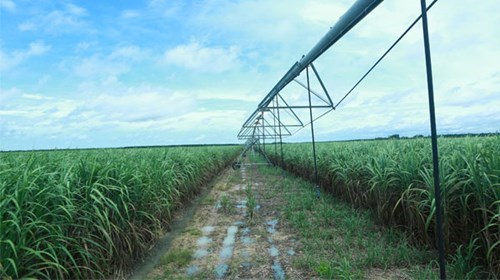Material area of BHS
Material area development strategy is one of the most important missions of BHS sugar industry system (BHS, BHS Ninh Hoa, BHS Phan Rang), which aims to improve the sugar content and yield of sugar cane.

Currently, BHS is planning to make investment for the material areaof 15,500 hectares with a total capital up to 72 billion VND with to determination put material areas into sustainable development, creating a new face for local agriculture with enormous fields withmodern cultivation andirrigation system.
The total material area of BHS distributed at the 7 agricultural points in the town of Ninh Hoa, Khanh Hoa province (9,100 hectares) and M'Drak district, Dak Lak province (3,900 hectares).These material areasare relatively concentrated, the average transport distance of 45 km, which is 25 km in Khanh Hoa Province (70% of yield), 70 km in M'Drak (nearly 30% of yeild), create favorable conditions for the intensive farming, harvest and transport management, and quality assurance of finished sugar cane. All investment is mechanically synchronized and implemented bysigning underwriting contract with local farmers for sustainable development goals - "Farmers gain benefits - Factory gains profits".
BHS is applying strict management procedures (including providing sugar cane varieties, mechanization, application of treatments, modern production and harvesting, processing products), which not only contributes to increasing the economic value but also supporting sugarcane farmers to improve the living standard and change the farming fragmented outdated practices.In addition to investments in material area, BHS also focuses on agriculture promotion with the capital of more than 2 billion VND. In particular, BHS particularly interested in supporting farmers in costs of repair in-field roads; saving irrigation trials; support sugarcane varieties; providing sugarcane sludge for new farmers; support forestry plowing for sugarcane growing (depth> 35 cm), planting underground plowing for sugar cane fertilizing; support by preferential interest rate for farmers to buy tractors, agricultural equipment; support costs for fuel pump cane irrigation, mechanization; support treatment of diseases in sugarcane; sendmaterial staff, local governments at all levels and outstanding sugar cane growers to study advancedtechniques and experience in the country and abroad.




